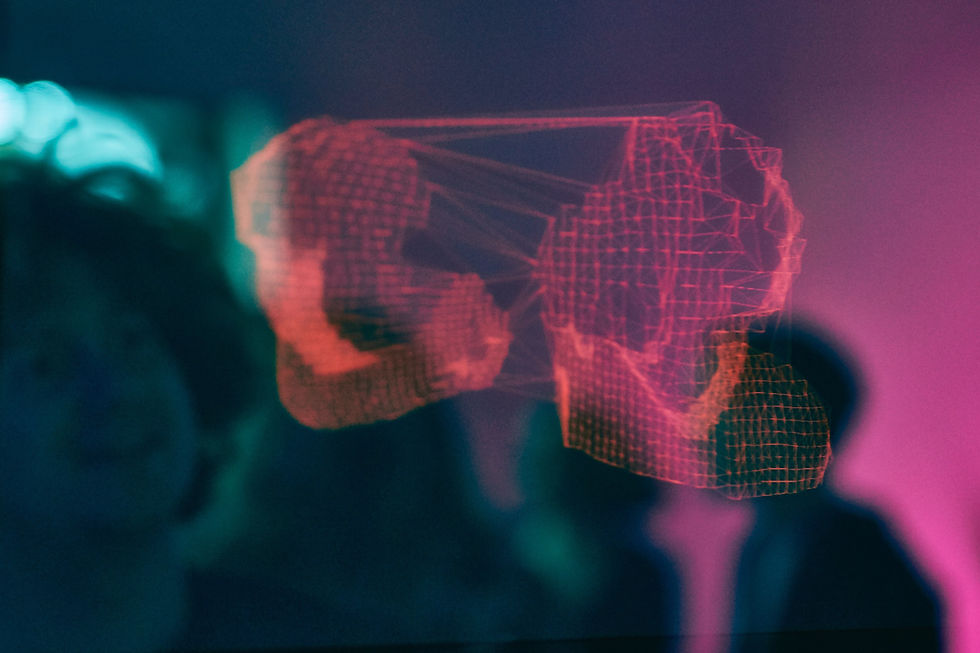Benevolent Botnet Enables Enjoyment of Art and Artifacts on Social Media
- EPOCH

- Sep 1, 2020
- 4 min read
Ben Wills-Eve | Lancaster University
The term ‘botnet’ is most commonly associated with cybercrime and has come to recent attention featuring in news stories detailing the dangers to internet security posed by fridges, washing machines and even cat-flaps. Bots and botnets on social media are currently the focus of similarly negative press due to their use in the spreading of fake news and potential influencing of recent elections around the world. On social media, bots are usually accounts that operate automatically, but the term can also refer to semi-automatic ‘fake’ accounts that pretend to be a certain type of user and require some human oversight. The latter are usually what is being referred to when the media talk about ‘bot farms’, particularly in Russia. Unlike traditional botnets, as featured in the article about hacked fridges, social botnets are simply coordinated networks of social bot accounts. Again, these are commonly associated with the spread of fake news and political propaganda, but one social botnet is starting to make an impression for all the right reasons. The Off The Easel social botnet is a community of over 1,000 social bot accounts present on Facebook, Twitter and Tumblr (a photo-blogging site). Many of these bots are self-proclaimed ‘fan accounts’ of famous artists, including the big names like Vincent Van Gogh to the more obscure such as Boris Kustodiev, an early-20th Century Russian painter, which share said artists’ works for other users to enjoy. Some of these bots carry out the same sharing activity but for artefacts in museum collections; for instance, there are eighteen Twitter bots dedicated to different departments of the Metropolitan Museum of Art in New York, showcasing different galleries from Medieval Art to Greek and Roman Art. These accounts constitute a mass of automated activity that is capable of sharing over 150,000 different artworks and artefacts in a month and millions of people are seeing and interacting with them; in March 2020 alone there were a staggering 88 million views and interactions with content posted by the botnet, which currently boasts over 7 million followers.

An important fact to note about this automated activity is that it is neither random nor mindless. Algorithms running in the background constantly assess which content is proving most popular, i.e. what is being viewed, liked, shared and retweeted the most, and tweak the volume and frequency of posts accordingly. The algorithm does not simply promote the already popular, as often happens with content on social media, instead it seeks to use the popular accounts as a way to recommend the bots for lesser known artists or collections, effectively promoting content that is relevant but might otherwise be overlooked. The bot accounts themselves do not act in isolation either but follow other bot accounts based on manually determined similarities in artistic style, meaning that any artist bot accounts tagged as impressionists will follow each other on Twitter. This not only creates small networks of related art and artefacts within the wider botnet, it also allows these accounts to retweet and promote each other’s content so that followers of one account might more easily find similar images that interest them.

The interconnectedness, scale and intelligent automation of the Off The Easel social botnet is what has allowed to share such a huge quantity of content to an ever-expanding online audience, many of whom may already follow official, human-run social media accounts of institutions like the Met Museum. It is important to note that bot accounts sharing museum or gallery collections are unofficial and are not affiliated with the given organisation, yet the idea is not for the bots to compete with the official accounts but to complement them, taking advantage of the growing amount of online content made available copyright-free by galleries and museums under Open Access policies. Of course, the experience of viewing artworks and artefacts as individual entities within a social media feed is completely different to that of seeing them on a museum or gallery website, where collections are often tightly grouped together; although decontextualization is a feature of many interactions on social media platforms, in the case of art and artefacts it is particularly pronounced.
Other practical problems also highlight one key issue with such automation, namely that it is truly automatic. The entire botnet was created and is managed by one individual, Andrei Taraschuk, a developer and art lover. However, Andrei spends significant amounts of time, effort and money hosting this social botnet and fighting its corner when policies designed to curb the activities of problematic social bots have a restrictive effect on the art bots. Twitter sporadically bans many of his bots for breaching its automation policies, despite their careful design and beneficial effects. Similarly, Facebook’s censorship algorithms sometimes ban his art bots for posting ‘pornography’, which can be triggered by anything from an artistic nude to a flock of birds. Millions of people obviously find enjoyment in the art and artefacts shared by one man’s benevolent botnet, but an overwhelmingly negative view of social media bots still poses a great risk to its future activity.
----------------------
Ben is a History PhD student at Lancaster University studying the role of automation, algorithms and AI in online public engagements with the past. He is also our Digital Humanities Editor - read more about his research here.
Twitter: @wills_ben






